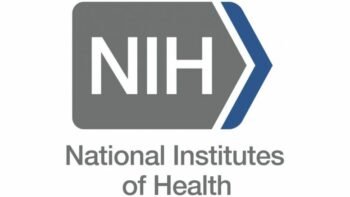The NSF vs. the NIH on Plagiarism

In the United States, two entities are responsible for the lion’s share of government-funded grants for scientific research: The National Science Foundation (NSF) and the US National Institutes for Health (NIH).
Both offices are tasked with awarding grants for promising research projects and then enforcing those grants by holding the recipients accountable to the standards of research integrity.
In the 2022-2023 financial year, the NSF handled 54 allegations of research misconduct, including 33 cases of alleged plagiarism. That number was down from 2008-2015, when the organization conducted an average of 83 investigations per year, with plagiarism being the most common issue, at roughly 84%.
The NIH, by contrast, averages around 32 misconduct cases per year, with plagiarism cases making up a small minority, around 5%. While already a significant difference, it has made more glaring with the fact that the NIH awards four times as many grants as the NSF yet reviews less than half the number of misconduct cases and even fewer plagiarism ones.
That discrepancy is the topic of an article by Dalmeet Singh Chawla at Chemistry World, which asks the simple question: Why are misconduct cases, in particular plagiarism cases, so much more prevalent with the NSF than the NIH?
The answer is likely a combination of many different factors.
The Major Differences
The article, which is based heavily on a 2019 study by Donald Kornfeld, points out several key differences between the two. The first is the area of focus for the two institutions and who they are most likely to fund.
The NSF is more likely to fund physicists, chemists and other mathematicians/scientists and put an emphasis on “products of the intellect and their ownership.” The NIH, on the other hand, focuses much more on biomedical issues and is more likely to fund clinical trials.
Another key difference is that the NSF will investigate misconduct allegations even if a grant was not awarded. The NIH will not.
A final difference is who is doing the investigation between the two entities. In both cases, the actual investigation is done by the research institution that received the grant, but with oversight from the government. However, with the NIH, that oversight is provided by the Office of Research Integrity (ORI) while the NSF has an internal Office of Inspector General (OIG), which has law enforcement powers.
This likely plays a role in the fact that an NSF case is roughly 2 times more likely to result in a finding of misconduct than an NIH case, with 88% of NSF cases resulting in a decision of misconduct and only 42% at the NIH.
In short, the NSF operates in a space that is more prone to plagiarism (and other misconduct claims), but also has a stronger internal investigation mechanism and investigates all cases, even ones where a grant was not awarded.
With that in mind, it is quite easy to see why the rate of plagiarism, and other misconduct, would be higher at the NSF. However, that does not mean that the NIH or the ORI can relax. The fight is far from over.
The Problem with Plagiarism and Other Misconduct
One of the main challenges that one faces when studying plagiarism is a simple fact: Plagiarism detected/reported rarely equals the plagiarism that happened.
We have seen this a lot on the academic integrity side. Nearly all studies looking at plagiarism in the classroom rely either on cases being investigated by the school or student self-reporting. While both approaches can provide valuable data, both are also flawed and likely to underreport.
With school investigations, instructors are never going to catch every case of plagiarism and, even when they do, they sometimes “divert” cases away from the school system, opting to handle them in class. Likewise, the phenomenon of individuals underreporting undesirable or risky behaviors is well understood.
As such, it is almost certain that both the NSF and NIH numbers underestimate the amount of integrity issues they face. How much so is difficult to say. This is especially true since neither organization tracks why the grant-receiving institution dismissed the allegations.
Also, neither institution is proactive in their search for misconduct, opting instead to wait for claims to be filed with them. Though the agencies have been taking greater steps on the application side following a series of embarrassing stories in 2018, there is very little being done on the output side.
That said, there are other protections in place. Published papers still go through the regular peer review process and journals have become increasingly vigilant about detecting plagiarism, even if gaps still exist.
However, it would still be nice if the NSF and NIH were more proactive on their ends and ensure that all data is kept and publicly available as it may help future research in this space.
Bottom Line
In the end, it seems that the difference between the NSF and the NIH when it comes to plagiarism and misconduct is easily explained by the differences between the two and not a sign that one is doing better or worse than the other in this space.
That said, the article and the research point to system issues with both systems and give opportunities for being more proactive both on detecting integrity issues and data retention/accessibility.
When it is all said and done, it is an interesting look at how certain variables impact plagiarism, or at least the reporting of plagiarism, and gives others a glimpse at some of the variables that may make plagiarism more or less likely.
That, in turn, may help others determine where to focus attention and other resources when it comes to preventing research misconduct.
Want to Reuse or Republish this Content?
If you want to feature this article in your site, classroom or elsewhere, just let us know! We usually grant permission within 24 hours.
